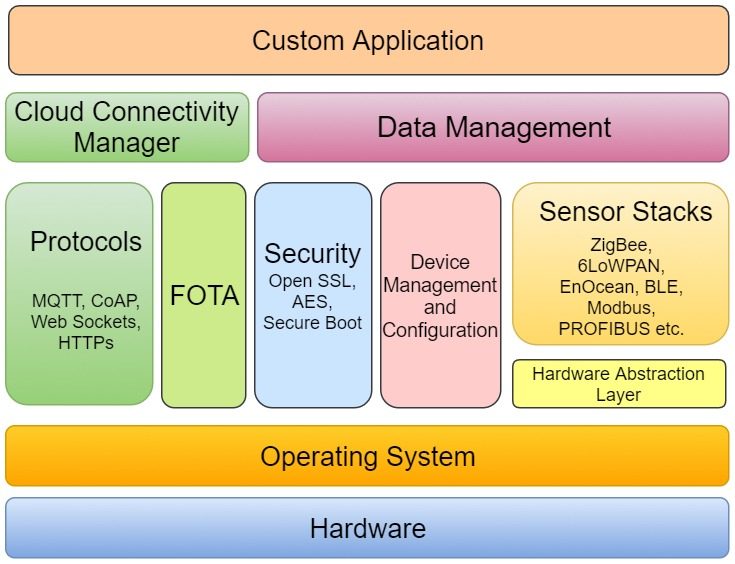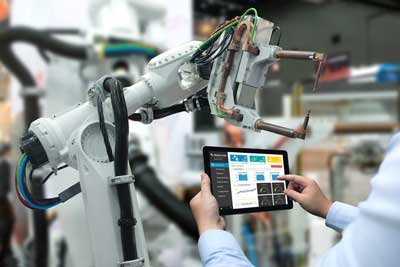We all must have come across these words of wisdom – “Failure is the Stepping-Stone to Success”! We were able to relate to this quote during a recent discussion with our IoT solution development team, regarding the need for IoT Proof of Concept (PoC) development.
Our in-house Subject Matter Expert, Mr. VidyaSagar (Head of Technology – IoT & Infotainment) suggested that we look for some IoT projects which were confronted with initial challenges and have failed to take off.
Good starting point, we told ourselves! Call it a coincidence or matter of good faith, we actually found what we were seeking.
The Survey that Showcased the Importance of PoC Best Practices
We came across an article (dated 24th May 2017) that shared some of the results of a survey conducted by CISCO. This survey saw participation of 1,845 IT and business decision makers in the US, UK and India.
The results revealed some interesting facts related to the fate of IoT initiatives. The survey showed that more than 60% of Internet of Things (IoT) projects couldn’t even surpass the Proof of Concept (PoC) stage.
The survey also threw some light on the main challenges that businesses face during an IoT project, across all stages of implementation. These are:
- Time to completion
- Limited internal expertise
- Quality of data
- Integration across teams
- Budget overruns
All this enlightened us and we realized how crucial the PoC approach is for any IoT initiative. It can definitely help businesses avoid some really expensive mistakes.
And for the majority of projects that fail at the PoC stage, a lot of time and money gets saved by not directly initiating an enterprise-wide IoT implementation.
The objective behind VidyaSagar’s suggestion also dawned upon us and we indeed thanked him for the nudge in the right direction!
Having established that PoC is the right approach, we decided to share with you some PoC best practices that can help increase your chances of designing a successful IoT Proof of Concept (PoC). Read along for some more words of IoT wisdom!
Decoding an IoT Project Journey
Before we get started with the PoC best practices, let’s first spend some time in understanding the anatomy of a typical IoT initiative.
An IoT journey, in any enterprise, is most likely to start with the realization of a business pain point by an internal team. This pain point is discussed, brainstormed and debated, by all the stakeholders, to translate it into a business use-case or a problem statement.

This problem statement is tagged with an outcome, expected from the IoT initiative. Post this, it is time for an internal evaluation of the company’s resources and technology expertise. All the stakeholders are expected to decide between Build v/s Buy strategy.
To test the waters and be sure of the feasibility of the IoT initiative, some companies may opt for IoT PoC development (which we strongly recommend).
Technical Proof of Concept Best Practices
In this section, we will discuss about technology best practices that will help you accomplish a successful PoC in a timely manner. Here We Go!
- Identifying the data collection points- One of the most important aspects of an IoT PoC design phase is to define data ingestion process and choose the optimal data collection points accordingly. This will involve evaluating sensor nodes, IoT protocols, the optimal data transfer rate, and more. While deciding on data points, especially if you are dealing with legacy industrial systems, you need to have a proper plan for retrofitting in place. This would ensure that your legacy production systems can communicate with the remaining IoT network entities and exchange factory floor data in real-time. This would also open up new opportunities to use the factory data for value-added processes like predictive maintenance of your valuable industrial assets. For the development of a successful PoC, it’s not necessary to collect all the factory data. An effective PoC design makes use of minimal resources and only the mission-critical data in order to demonstrate the defined objectives.
- Developing a Secure IoT Gateway Device- An IoT gateway device forms the backbone of any IoT project. IoT gateway is responsible for connecting the IoT devices, the sensors and the cloud within the network. IoT gateway is also entrusted with crucial tasks such as device configuration management and device authentication for a secure network access. Some specialized gateways are even designed to support edge-analytics for advanced data analysis and processing. Here is a snapshot of the basic functional architecture of an IoT gateway.
 Thus it becomes all the more important to have a well-defined IoT gateway design ready to ensure the success of your IoT implementation. At the PoC design stage, it is advisable to select hardware and software components for the IoT gateway development that are of production grade and can be reused in the actual PoC implementation. This will ensure cost and time saving during the full-scale development.
Thus it becomes all the more important to have a well-defined IoT gateway design ready to ensure the success of your IoT implementation. At the PoC design stage, it is advisable to select hardware and software components for the IoT gateway development that are of production grade and can be reused in the actual PoC implementation. This will ensure cost and time saving during the full-scale development. - Device and Data Management- The development of sensor nodes comes with a unique set of challenges ranging from designing optimal frequency for data transfer, to power source configuration and a robust data backup plan when a sensor fails. For a successful IoT implementation it is advisable to follow some PoC best practices like:
- Optimizing Data Transfer and Power Management Process - In most scenarios, an internal battery is the primary source of power for the IoT sensors. These batteries are expected to run for years without any replacement. These battery-powered sensors have to remain awake to communicate efficiently with the cloud (bidirectional). Additionally, if the frequency and size of the data packets exchanged are higher, more battery charge is consumed. Thus, you must choose the duration when the sensors need to remain awake and decide a power management option accordingly.
- Robust Back Up Plan- You must have an efficient data back-up plan in order to prevent data loss. Data losses are common when a sensor node fails or there is network failure while a data packet is being sent over the network channel.
- Remote Device Management through FOTA (Firmware Over The Air) module: FOTA offers a robust mechanism for remote device management that enhances security of your critical devices. It is recommended to include FOTA feature development during the PoC design phase itself.
- Developing a secure and scalable Cloud Application- IoT cloud application is responsible for storage and advanced analysis of data aggregated from the sensors. Below are some of the suggested best practices.
- Security First: In order to develop a secure cloud interface, you must select secure internet-based protocol such as MQTT, Websocket, CoAP, or AMQP.
- Additional layers of security can be added to your application using data encryption techniques, Role Based access Control, Device Authorization, secure certifications (TLS/SSL), and more.
- Choose an optimized Database: Design of cloud database forms yet another critical step in cloud application development. Based on the data collection requirement, the database in the cloud needs to be configured to manage the huge volume of data from the sensors.
- Ensure Future Scalability: While configuring the Server, it’s critical to configure the server with future scalability in mind. For this you can go for auto-scaling option using services like AWS-EC2 for automatic capacity adjustment while optimizing server performance.
- UI dashboard on web/mobile- Web/Mobile Applications play a very important role in the overall success and end-user acceptance of your IoT initiative. Developing a User-Centric HMI requires in-depth design thinking and expertise in wireframe development, HTML5 and in tools like Qt, Eclipse and more. As an organization, one may also need to evaluate feasibility of BYOD (Bring Your Own Device) initiative within the organization. With the help of an expert UI development team, it is also possible to re-use most of the HMI/UI components designed during IoT PoC phase, for the final roll-out.
Source: Gemalto

If executed strategically, an IoT PoC project can help you to identify and pre-empt any catastrophic mistakes during a full-fledged IoT implementation. And the aforementioned PoC best practices will help in ensuring that your IoT project journey is a smooth one!
Do contact us to share your views, comments or personal experiences in IoT PoC development.

